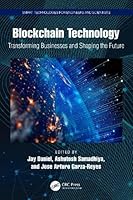
The Science and Technology of Particle Accelerators
- Length: 322 pages
- Edition: 1
- Language: English
- Publisher: CRC Press
- Publication Date: 2020-12-28
- ISBN-10: 1138499870
- ISBN-13: 9781138499874
The Science and Technology of Particle Accelerators provides an accessible introduction to the field, and is suitable for advanced undergraduates, graduate students, and academics, as well as professionals in national laboratories and facilities, industry, and medicine who are designing or using particle accelerators.
Providing integrated coverage of accelerator science and technology, this book presents the fundamental concepts alongside detailed engineering discussions and extensive practical guidance, including many numerical examples.
For each topic, the authors provide a description of the physical principles, a guide to the practical application of those principles, and a discussion of how to design the components that allow the application to be realised.
Features:
- Written by an interdisciplinary and highly respected team of physicists and engineers from the Cockcroft Institute of Accelerator Science and Technology in the UK
- Accessible style, with many numerical examples
- Contains an extensive set of problems, with fully worked solutions available
Rob Appleby is an academic member of staff at the University of Manchester, and Chief Examiner in the Department of Physics and Astronomy.
Graeme Burt is an academic member of staff at the University of Lancaster, and previous Director of Education at the Cockcroft Institute.
James Clarke is head of Science Division in the Accelerator Science and Technology Centre at STFC Daresbury Laboratory.
Hywel Owen is an academic member of staff at the University of Manchester, and Director of Education at the Cockcroft Institute.
All authors are researchers within the Cockcroft Institute of Accelerator Science and Technology and have extensive experience in the design and construction of particle accelerators, including particle colliders, synchrotron radiation sources, free electron lasers, and medical and industrial accelerator systems.







